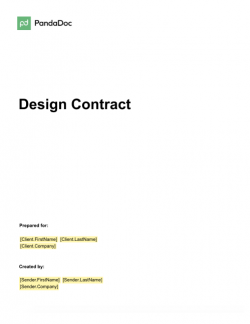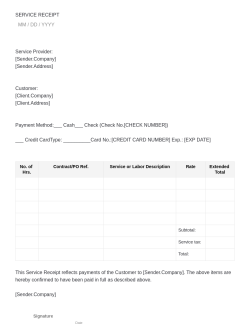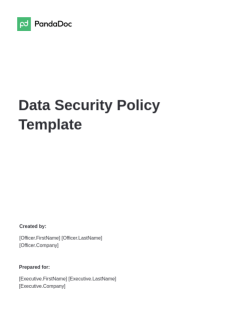
A revolving credit agreement is a loan arrangement that allows borrowers to access a pre-determined amount of funds using their approved credit limit. This loan may be suitable for businesses or individuals who require ongoing financing for various purposes, such as inventory purchases, marketing activities, or paying employee salaries.
This Agreement is entered into between
[Borrower.FirstName] [Borrower.LastName] , ("Borrower"), and
[Lender.FirstName] [Lender.LastName] , ("Lender")
Specify the opening date of the revolving credit agreement, including any terms and conditions for accessing the funds.
The Lender agrees to provide a line of credit to the Borrower of up to a maximum amount of $ (insert amount). In exchange, the Borrower agrees to make regular payments on the outstanding balance according to the terms outlined in this Agreement. As of the opening date of this Agreement, the outstanding balance is $ (insert amount) and Borrower may access this amount at any time using their approved credit limit.
Outline any specific terms and conditions that must be met to maintain access funds. These may include making regular loan payments on time, maintaining a minimum balance in an account linked to the credit line, or paying a specific interest rate on outstanding balances.
The interest rate for this account will be (insert rate) percent, and it will be assessed monthly on the outstanding balance.
Payments must be made by Borrower according to the terms set out in this Agreement and can include a combination of fixed monthly payments and any accrued interest charges.
Borrower can request an increase or decrease to the credit limit by notifying Lender in writing.Borrower must make timely and full payments on all outstanding balances to avoid any penalties or fees, such as late payment charges or overdraft fees.
In the event of a default on this agreement, Lender reserves the right to take legal action against the Borrower to recoup any outstanding payments.
Either party may terminate this Agreement upon written notice, and Borrower must pay all outstanding balances in full.
Keep in mind that a revolving credit agreement has a pre-determined maximum amount of funds available. You may wish to specify this limit in the terms and conditions, along with any limitations on the transactions the Borrower can make using these funds.
The unpaid balance on this account cannot exceed $ (insert amount) at any given time. If the balance approaches this level, the Borrower must take immediate action to bring it back below this limit.
Include this requirement in your terms and conditions and any deadlines for receiving these statements.
The Borrower will receive a periodic statement from Lender every month, outlining the current balance and any accrued interest charges. The Borrower should review this statement carefully and contact the Lender immediately if there are any discrepancies.
Charge a delinquency fee for late or missed payments. This standard practice in many revolving credit agreements can be used as an incentive to ensure that required payments are made on time.
The Borrower is expected to make all payments on time, and Lender may assess a fee of $ (insert amount) if any payment is late or missed by (insert number) of days.
Many lenders will allow borrowers to pay off their outstanding balance at any point without penalty. You could also include a clause specifying your prepayment policy, such as whether Lender will charge interest on any amounts paid early.
The Borrower may pay off the outstanding balance on this account at any time without penalty. To do so, Borrower should contact the Lender directly to arrange for full payment of all amounts due.
This Agreement will be governed by the laws of the state of [Lender.State] .
Either party can cancel this Agreement at any time as long as all outstanding balances are paid in full. If the Borrower wishes to cancel the account, he or she must send written notice to Lender at least (insert number) days before the desired cancellation date.
We hereby agree to all the terms and conditions outlined in this Agreement, and we understand the financial obligations that come with it. We look forward to a long and successful relationship with Lender as we work together to build our credit and manage our finances effectively.
MM / DD / YYYY MM / DD / YYYYUsed 4,934 times
AI assistant included
Care to rate this template?
Your rating will help others.
Thanks for your rate!
Sign up to use this winning template
No credit card required

Facebook Marketing Proposal Template

Freelance Design Contract Template

Service Receipt Template
Use this free service receipt template to provide your customers with a receipt after they pay for services rendered (or to be rendered).

Data Security Policy Template
A Data Security Policy Template is a collection of rules put in place by your business to safeguard its data from cybercrime in this day and age of cutting-edge technology. Create your data security policy using this sample as a guide, then edit it to suit your company's requirements.
A revolving credit line is an open-ended form of credit that allows you to borrow and repay funds as needed. This type of account typically comes with a pre-established credit limit. Interest will be charged by the Lender on the outstanding balance each month. To take advantage of this credit line, make regular payments according to the terms set out in your agreement with the lender.
A major difference between a line of credit and a revolving credit agreement is that the line of credit comes with an established credit limit, whereas a revolving credit account does not. In a revolving credit agreement, you will be charged interest on your outstanding balance each month, whereas, with a line of credit, you may only be charged interest once you go above your credit limit. Both types of accounts can be useful tools for managing your finances and building or rebuilding your credit, but it is important to understand the terms and conditions of each one to succeed.
A revolving credit agreement is a legal contract between you and a lender that outlines the terms of your credit line. This agreement will typically include information on the interest rate, minimum payments, late payment fees, and prepayment policy. Whether you are just building credit or rebuilding your credit after a financial setback, a revolving credit agreement can help you manage your finances and grow your credit over time.
Several key items should be included in a revolving credit agreement, including the terms and conditions for accessing your credit line, repayment requirements, interest charges, any applicable penalties or cancellation policies, and the governing law for the agreement. Other important details include:
To write a revolving credit agreement:
You can also use PandaDoc’s free revolving credit agreement template to help you save time and effort in drafting.
Parties other than PandaDoc may provide products, services, recommendations, or views on PandaDoc’s site (“Third Party Materials”). PandaDoc is not responsible for examining or evaluating such Third Party Materials, and does not provide any warranties relating to the Third Party Materials. Links to such Third Party Materials are for your convenience and does not constitute an endorsement of such Third Party Materials.